TONGA 2023
The Hunga Tonga-Hunga Ha’apai underwater volcano started erupting in late December 2021 and led to a large eruption on January 15, 2022. The volcanic eruption was the worst to hit the Pacific in decades. The eruption generated a 1.2-metre tsunami that hit coastal areas of Tonga’s capital, Nuku’alofa as well as several other countries of the Pacific Ocean. The eruption also generated a 5km wide plume of ash, steam and gas which blew across the islands of Tonga, leaving a 1-2cm layer of volcanic ash in their wake and causing damage and health hazards across the island nation.
The entire population of Tonga, approximately 105,000 people, was impacted by the eruption and about 84,000 of those people were directly affected. Significant damage was reported across the country. The pandemic further exacerbated the crisis in Tonga. The poverty rate in Tonga before this eruption was 25% and as a country that relies heavily on tourism, many industries and businesses were seriously affected by the COVID-19 lockdown. This has made the country’s recovery even more difficult.
Between the volcanic eruption, and the financial hardships exacerbated by the COVID-19 pandemic, Tonga’s public services were overwhelmed and lacked the budget for essential equipment and training for their firefighters. Tonga Fire & Emergency Services (TFES) reached out for support from GlobalFire.
In response to TFES’ request for support, GlobalFire teamed up with GlobalMedic to send a shipment of much needed equipment. This included:
160 Bunker Suits
132 Helmets
34 Pairs of Boots
2 Low Pressure Air Bags
Station wear, hand tools, SCBA, hose, nozzles, rope rescue equipment and more.
Following the arrival of the donated equipment, four GlobalFire volunteers deployed to Tonga to conduct a two week training course for 21 TFES firefighters. The GlobalFire team included 2 Acting District Chiefs and 2 Acting Captains who work full time with Toronto Fire Services and generously volunteered their time, skills and experience to improve the capacity of the brothers and sisters in Tonga.
The team spent 70 hours over a period of two weeks training between 18 and 21 firefighters each day. The training followed NFPA guidelines for each discipline and included:
Hazardous Materials Awareness - NFPA 1072
Auto Extrication Operations Level 1 - NFPA 1006
Vertical Rope Rescue (Module 1) Operations level - 1006
Firefighter Survival - NFPA 1407 and IIAF FGS operations
Live Fire Training Operations - NFPA 1403 includes, fire dynamics, reading smoke, vehicle fires and interior fire attack.
Search and Rescue (interior firefighting) - NFPA 1670
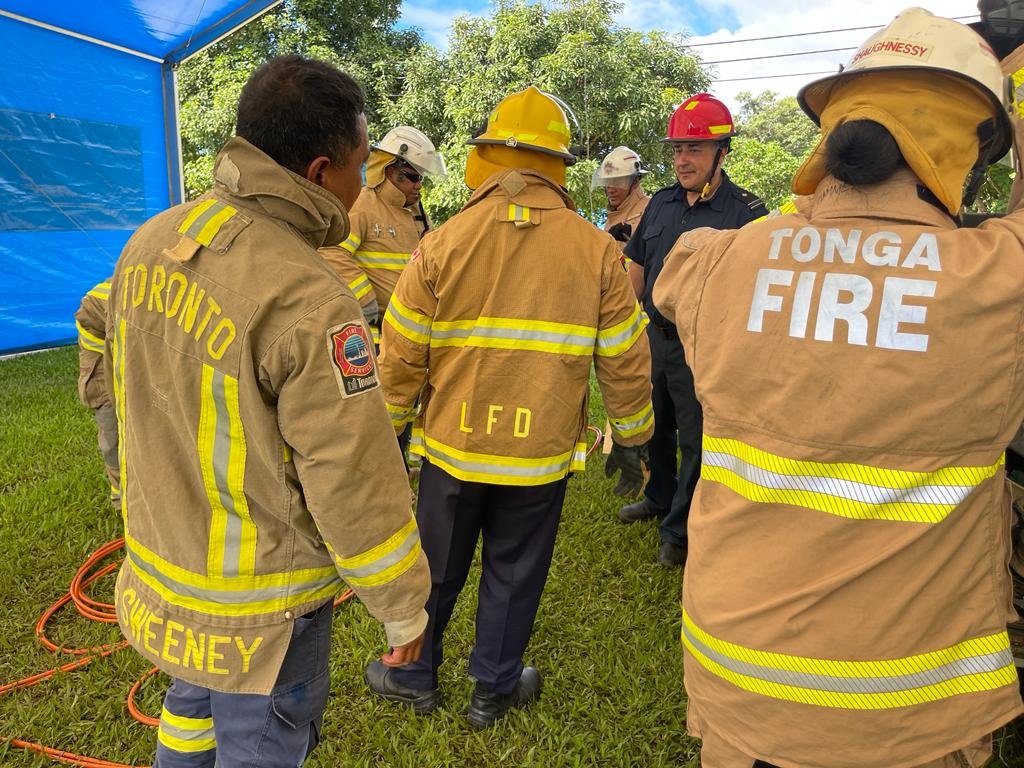
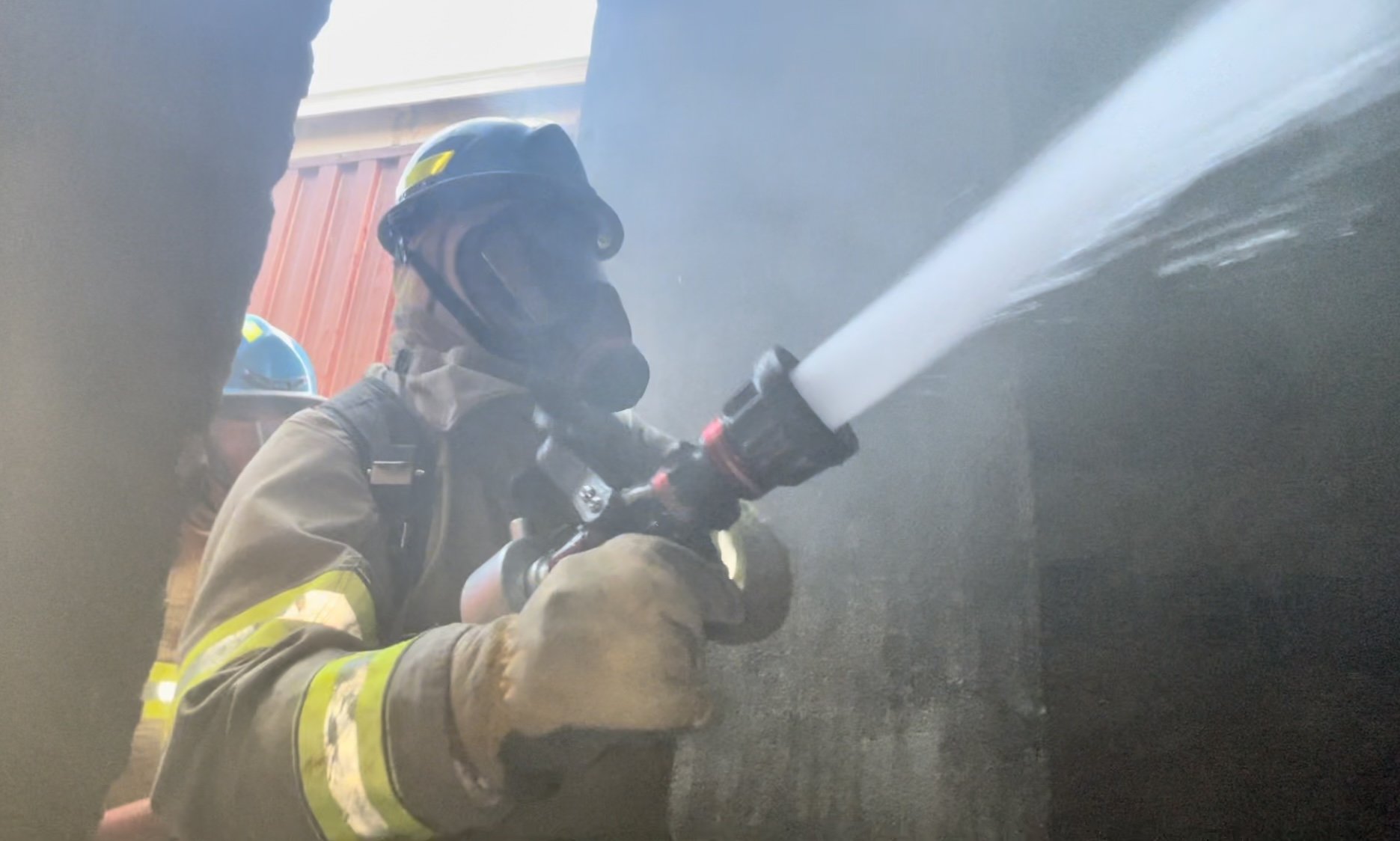
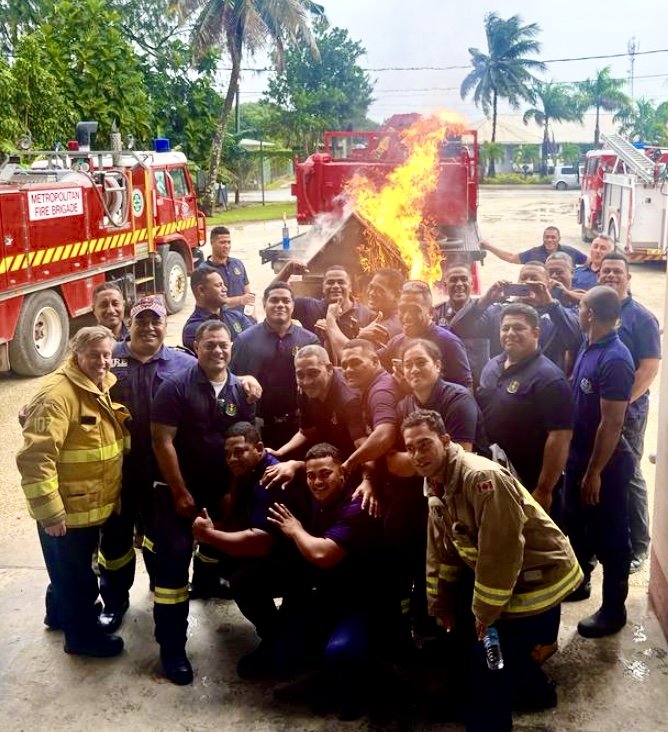
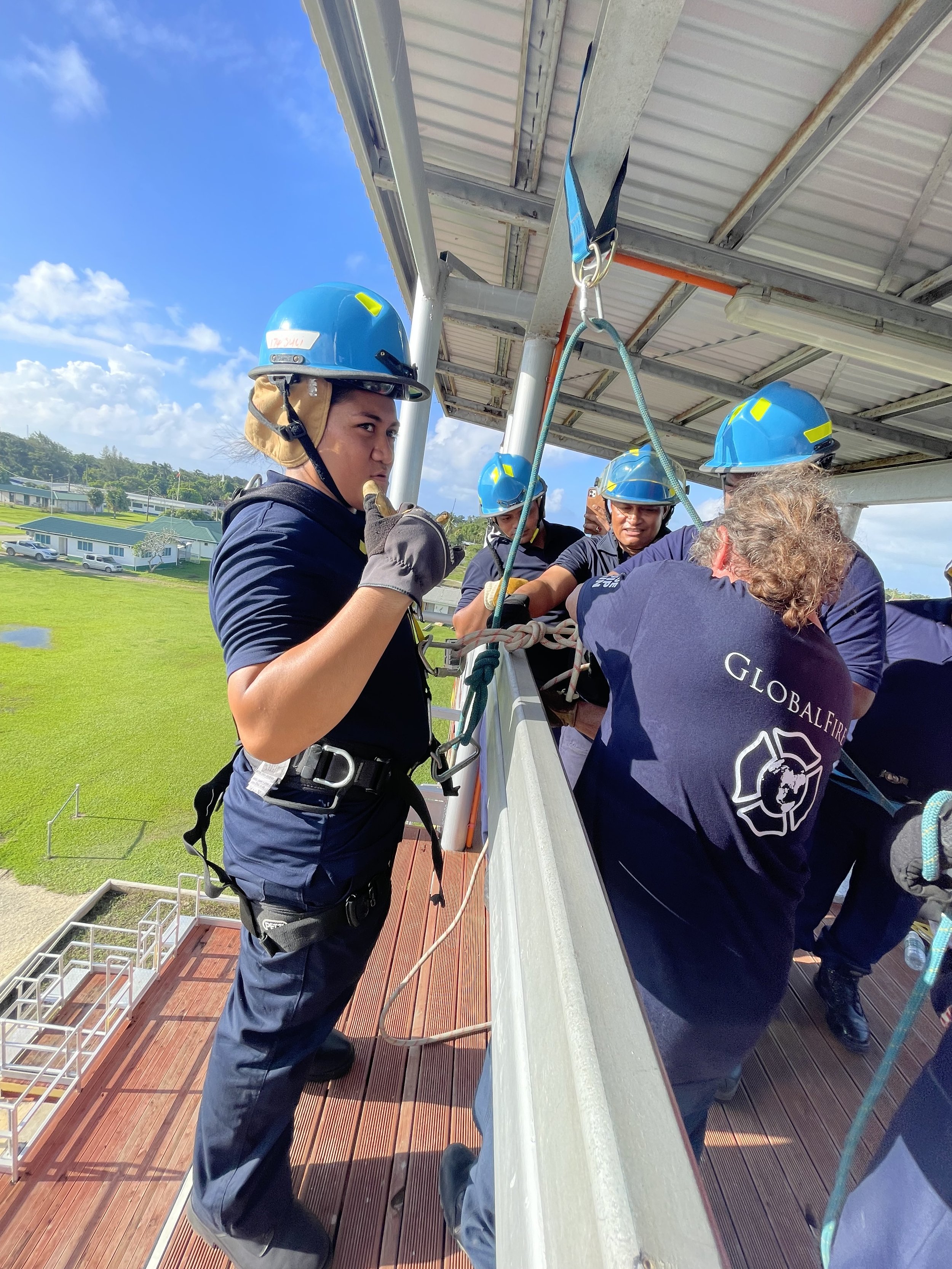

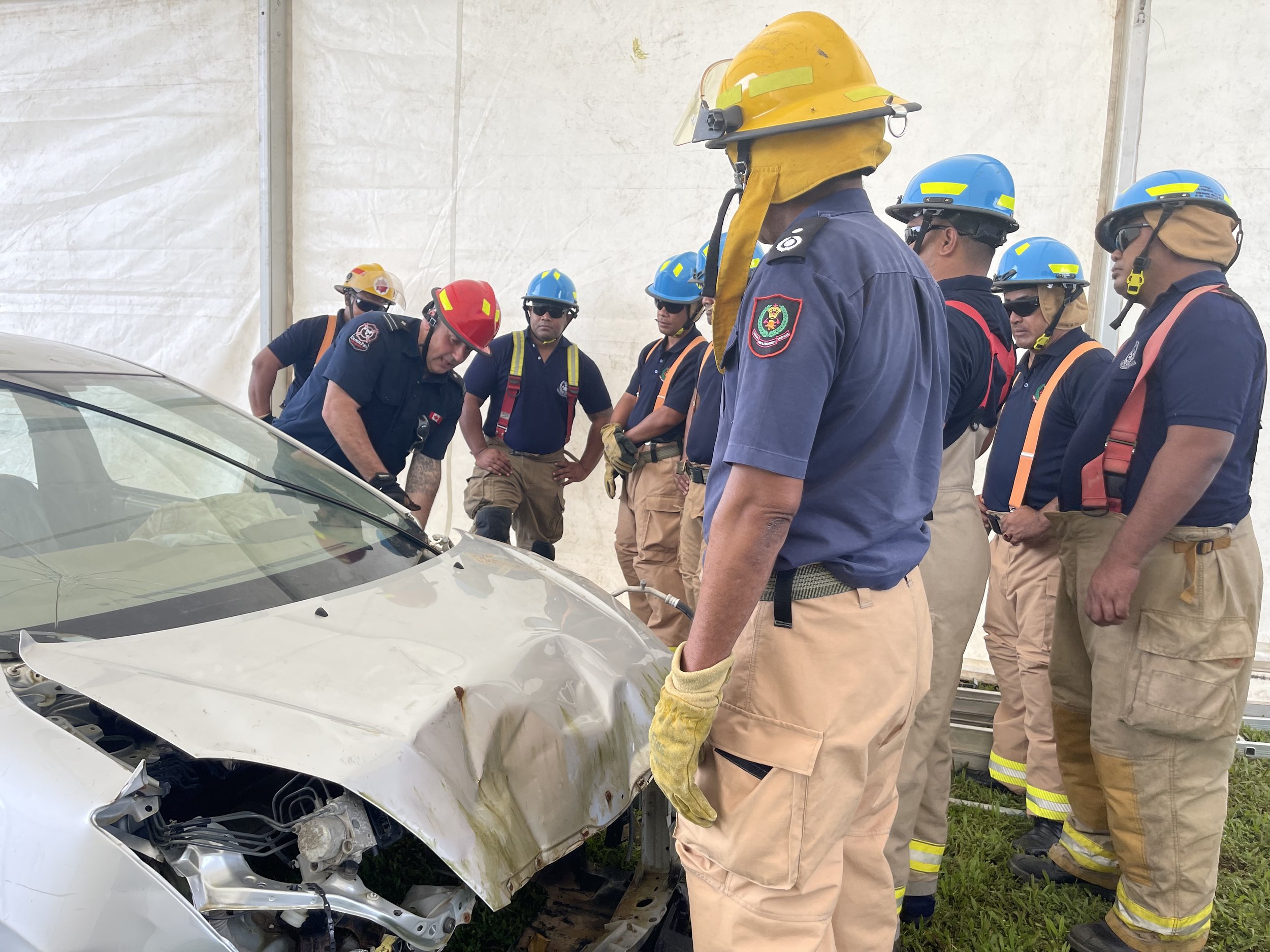
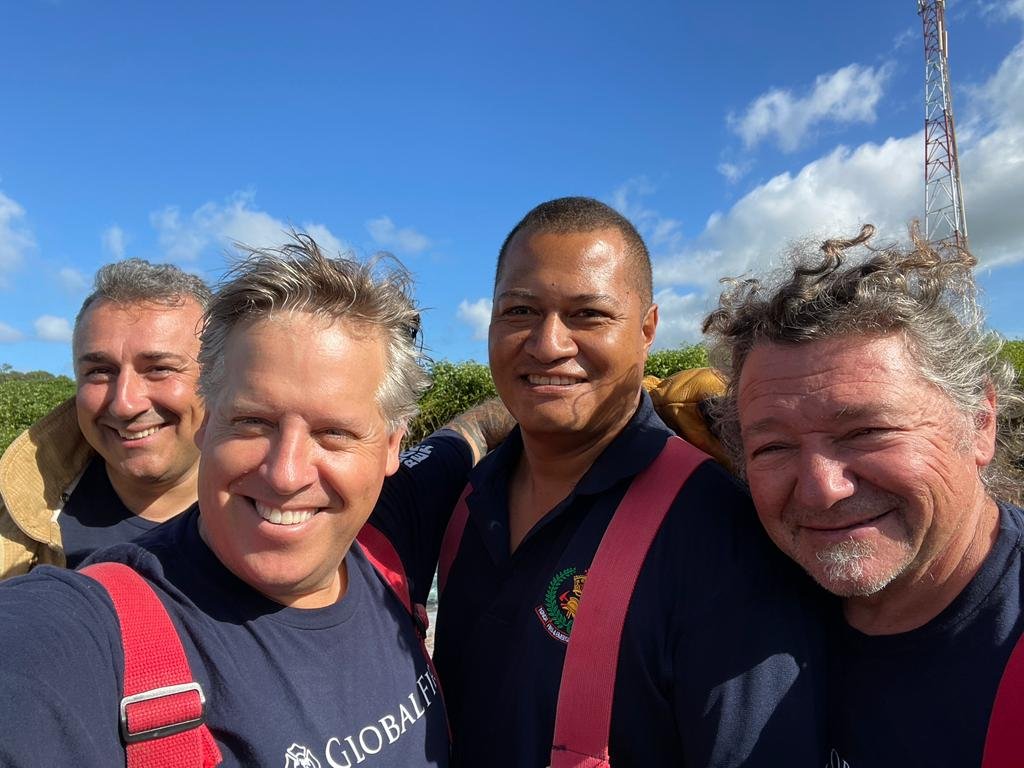
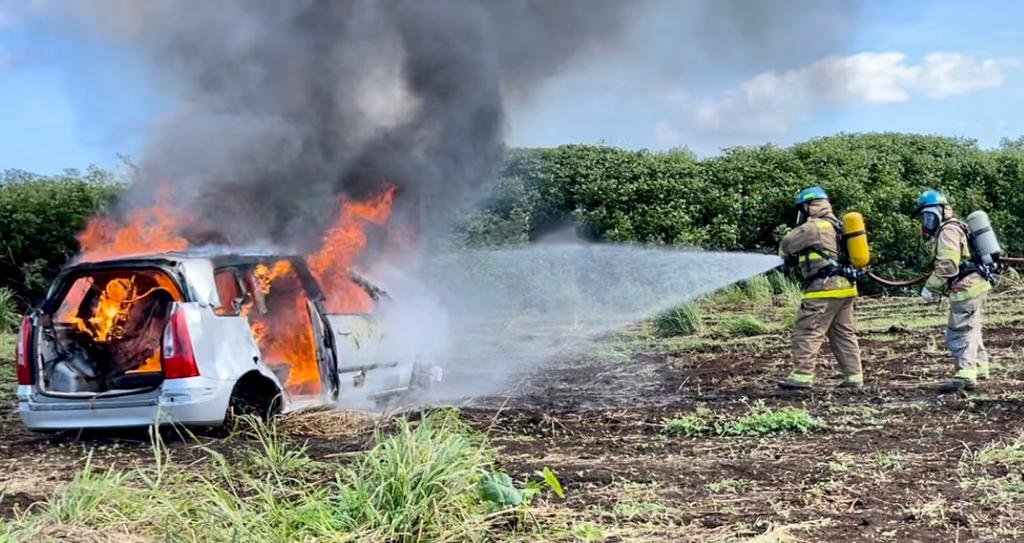
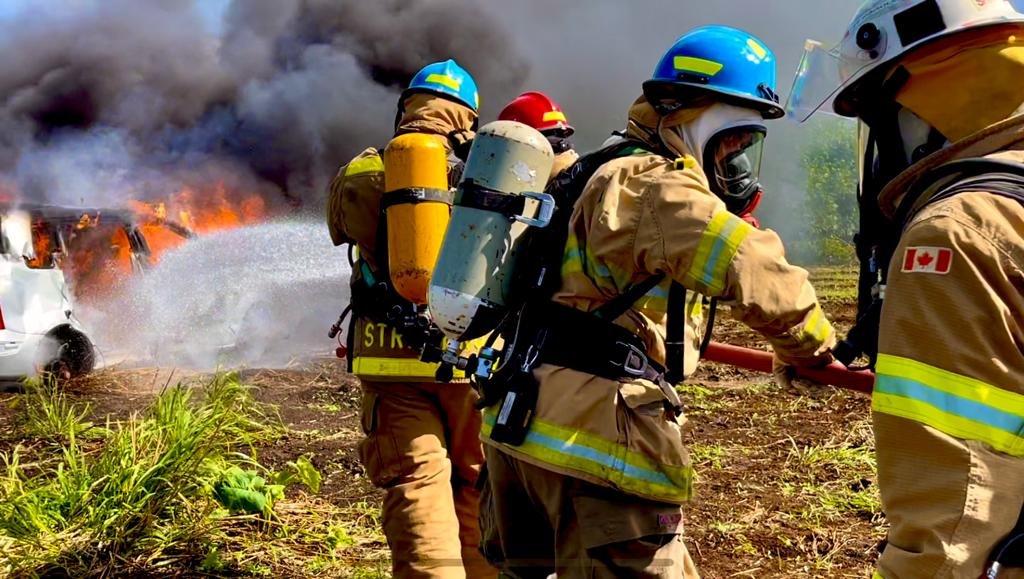
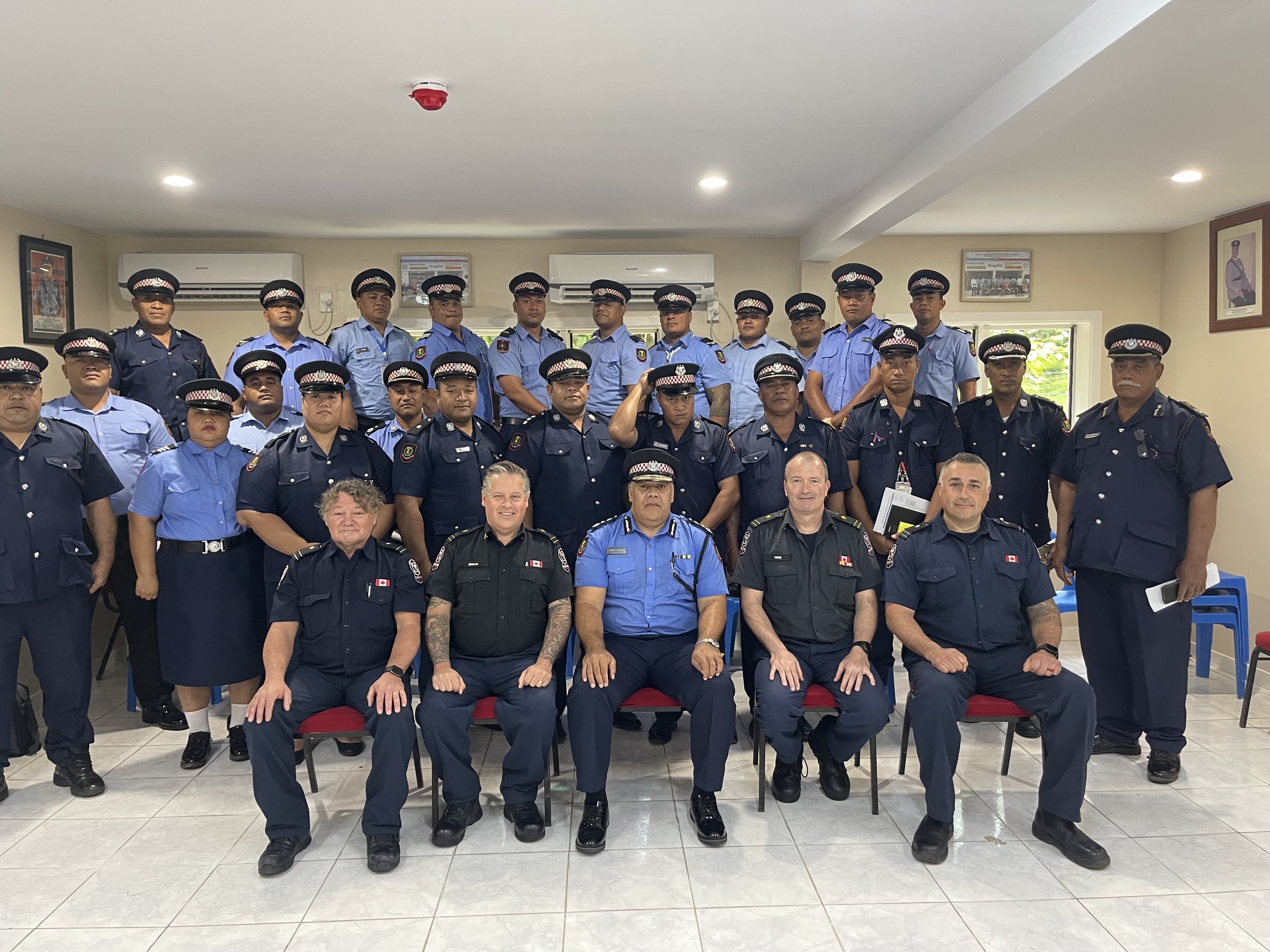


Tonga Fire & Emergency Services Thank GlobalFire for Training
Auto Extrication Training
Fire Dynamics Demonstration
Entanglement Tunnel
Rope Rescue Training
Firefighter Survival Skills Training

